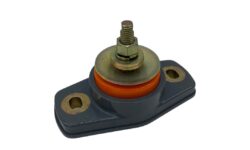Top 10 Tips to Improve Your Website Design
Improving Website Design allows a website to stand out, because it integrates it with the user experience, functionality and adequately complements its content.
A successful Website Design balances both high-performance content and an exceptional user experience. The last thing you want is to spend time writing amazing content, so that it goes unnoticed due to design flaws or navigation problems.
The user experience on a website spans many areas, and it can be challenging to understand as you figure out what is most important to address.
So, what do you need to know to start improving web design for your company?
The following ten tips ensure you focus on what is most important when improving design for your web design company.
-
Before Improving Your Web Design, Have A Plan
Start by planning the journey from the first time someone visits your website until they become a customer.
As you do so, think about which pages to view, what content to read, and what offers to convert to. Understanding this allows you to improve your web design company and have a site that nurtures potential customers through the sales funnel.
If you don’t have a CRM to make your research easy, interview as many clients as possible without exaggerating. Ask them if they can take 15-30 minutes of their time to answer a few questions, and compensate with an incentive.
Then use that data to map out a strategy to help you improve your web design company. This helps you identify the key touch points on your website or the areas that your users interact with. Along these touchpoints, you trace the emotions, thoughts, goals, pain points, and opportunities you need to evoke.
Answering these questions helps you improve your web design:
- Do the images help you better address these areas in the way you want?
- What about a particular color palette?
-
Eliminate Distractions & Reduce Friction
Your audience has an eight-second attention span and certain elements of the website can detract from the message you are trying to convey.
Complicated animations, too long content, and heavy images are just a few examples. Make sure you have consistent branding guidelines to guide you when improving web design.
It details the font style, colors, type of images, iconography and use of the logo. Also avoid using too many animations or interactions on the page. Define where you want to direct users’ attention when they arrive on the page and in what order it should flow naturally.
These are the details that either help improve the web design or undo the user experience. Help your users better understand what you want them to do, leaving less room for confusion.
-
Include Social Proof
Studies show that when a prospect sees powerful testimonials from real people, they are 58% more likely to buy a product.
For testimonials to build effective trust, when viewed by users, there are some strategies to follow.
Video testimonials create a stronger human connection by hearing voices and seeing real people’s faces.
Separate the testimonials and include a heading and sentence detailing the result or benefit the customer gained, to provide context.
Include the photo and the name of the people or companies.
As long as they are genuine, testimonials improve web design, user experience, and build trust with prospects, before they become customers.
-
To Improve Web Design, Implement Calls to Action
Once a visitor lands on your website, guide them to the places on the website that help them convert.
One of the best ways to improve web design is by using strategically placed calls to action.
Include them in top right of navigation, below the sections that require action, and at the bottom of the website pages.
-
Use The Right Stock Images
Ideally, you should use original images on a website, but if that is not an option, there are techniques to help you select the correct file image type.
Showing the same images on your website that other sites use does not help its credibility.
Users unconsciously project their negative experiences onto stock photos, reducing confidence and adding friction to the conversion process.
Find photos that represent realistic scenes, in well-lit environments
-
To Improve the Web Design, Create an Organized Navigation
When improving web design, navigation is key. Basically, it is the map that shows the main places that users can visit. There is nothing worse than a website with a cluttered or confusing navigation interface.
If users can’t find what they’re looking for, they have no reason to stay on your site. Instead, they are sure to bounce back and find a competitor that offers them a better user experience.
To improve your website navigation, make sure your visitors can easily find what they are looking for. This includes optimizing the content, a navigation hierarchy, and a responsive design so that the experience does not change drastically on mobile devices.
The clean and organized navigations allow the user you want to move easily around your website and that there is nothing to hide. As a result, they are more likely to visit a greater number of pages during their session, increasing their time on your website.
-
Allow Visitors to Scroll Through the Home Page
There was a time when we were afraid that the pages on our website were too long, especially the home page, but those days are behind us.
In a Nielsen Norman Group study, 74% of display time on a web page is spent on the first two full screens, up to 2160px horizontally.
This is a list of some of the most crucial areas:
- Value proposal
- Introductory video
- Summary of services
- Product characteristics
- About the web design company
- Testimonials
- Case studies or success stories
- Content
White space is an essential element for improving web design, helping you to divide the page and increase readability.
-
Mobile Optimization Is Essential
80% of Internet users own a smartphone, and to improve web design, it is essential to optimize it for mobile devices.
“61% of users are unlikely to return to a mobile website they had trouble accessing and 40% visit a competitor’s site.”
-
To Improve the Web Design, Make It Easier to Find Prices
If your website does not show the prices of your products or services clearly, or worse, lacks a prices page, users will go to your competition.
The importance of including prices on the website cannot be stressed enough. Doing so allows visitors to complete their research (as any modern shopper would like) and ultimately rate or disqualify your product.
Doing so saves your sales team from wasting time with someone who is not a good fit. You may be concerned that your competition is trying to offer a lower price or that your website’s prices are too complicated to display.
-
Create A Self-Select Experience
The so-called self-selection tools take users through a series of questions to arrive at a specific type of result. These results can be a personalized quote, a product, or an answer to a very high-level question.
These types of tools make it easier for people to understand what the best products or services are for them, without having to navigate the website to find them.
An example is Amazon’s product recommendation selector under certain items on your website.
Hope the above tips on Oceanarticles are useful to improve the web design for your company!



